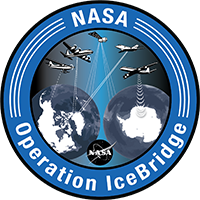KT-19 Skin Surface Temperature Sensor
(NASA P-3B and DC-8)
The KT-19 is a radiometer that measures the brightness temperature of the surface beneath the aircraft. By knowing the emissivity of the target—sea ice has an emissivity very close to one—the KT-19 can estimate the surface temperature. Thick sea ice is sometimes as cold as -20 or -30 Celsius (-4 or -22 Fahrenheit) while open water is around -2 Celsius (28 Fahrenheit). The KT-19 as calibrated for IceBridge can accurately measure the temperature of leads larger than 40 meters (130 feet). For larger leads covered in thin ice, the KT-19 can provide surface temperature data that can be used to estimate ice thickness. Leads smaller than 40 meters have a reduced effect due to the KT-19 footprint, and correspondingly the KT-19 measures a colder signal for those leads, but many small leads can still be detected.
KT-19 data at NSIDC





